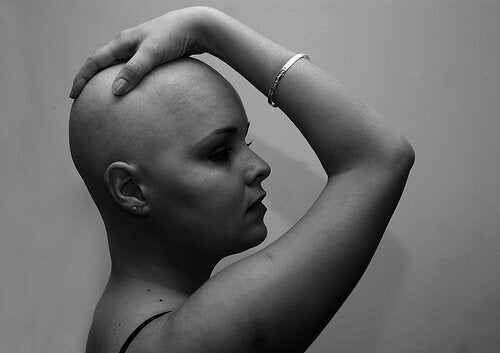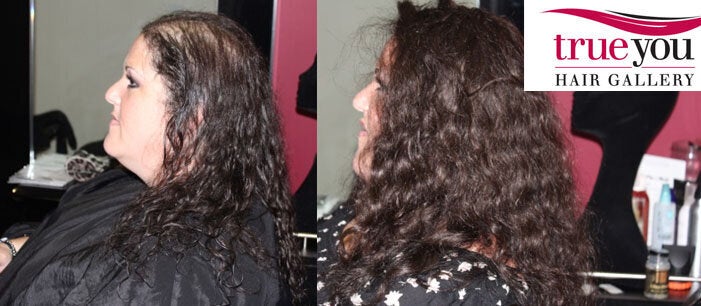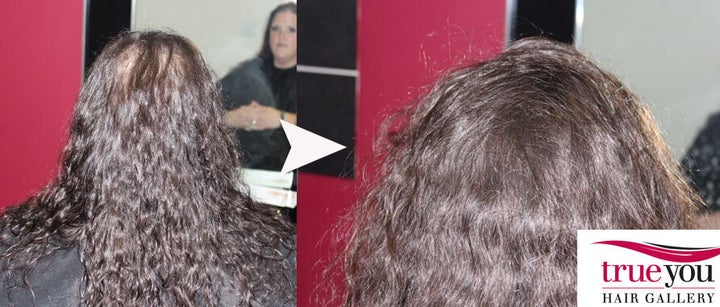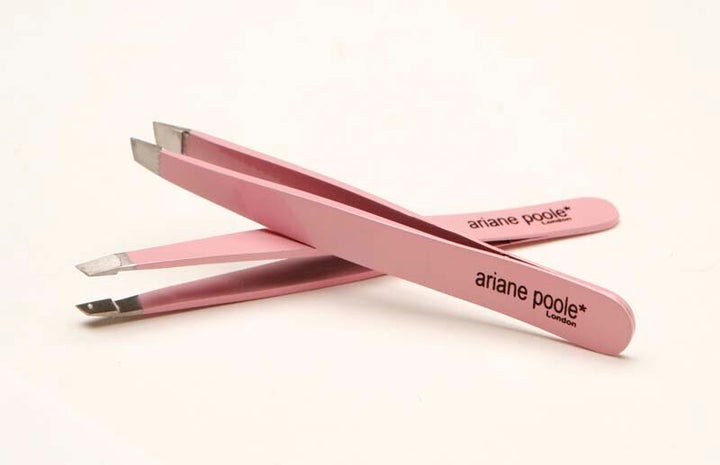
Cancer is devastating in many ways, and having all your hair fall out just compounds your level of misery. When you're constantly going to the hospital and having needles stuck into you, vanity isn't your biggest priority, but when so much of your life has changed it's nice to recognize yourself in the mirror.
A very common side effect of chemotherapy is a tender skull and hairloss and this can be very disconcerting. The reason this happens is beacuse the drugs attack the fastest growing cells in your body- which is both cancerous cells AND hair roots. It's sad that what's curing you is also making you lose hair, but that's a different debate.
There's no quick curative method to stop the hair falling out, though there are some potentially helpful options (like using a cold cap, but this isn't suitable for everyone) so it's important to think about your options. I'm here to guide you through the bewildering maze of acryclic wigs, human hairpieces and hats that can help during this process.
It's important to note that you don't just lose hair on your head- it can also shed from all over the body, such as eyelashes, eyebrows and legs. Others may be rather lucky and not find they lose too much at all, but at a bare minimum a level of thinning is generally expected.
Step One: Prepration
As horrible as it is to lose all your hair, it will be even worse if you don't have something to use when this occurs. Once the chemo has started you'll be feeling fairly weak so it's a good idea to shop around for something suitable to use first. Some people also like to have their hair cut short before the process starts- whilst I understand this is a good way to acclimatize, as someone who didn't lose all their hair I think I'd rather play the wait and see game.

Step Two: Choosing your wig
There are three types of wigs/hairpieces you can opt for. One is an acrylic wig, one is a human hair wig and one is a hairsystem, or hairpiece. Let me break these down for you.
An acrylic wig is longlasting, easy to wash and comes in a variety of colours. They tend to be relatively cheap and pretty hardy. You can get them from various stockists such as Hot Hair and they will last a long time. You may find the NHS gives you a voucher towards a wig (and fits you for it, depending on your area) but this tends to be a fairly low amount, and only absorbs the cost if you're on benefits. You will be able to get a reduction in price on a wig through the NHS as they deal with suppliers, but choices can be limiting.
These wigs will generally need to be cut by a hairdresser for you, as most wigs have too much hair and a competent hairdresser will make them fit you better. They can't be heat styled, but they will last 6-9 months.
The other type of wigs on offer are human hair wigs which look very natural and tend to feel really soft. You can colour and heat style these, but they don't last as long and tend to be more expensive. You will also need to get these cut, so they fit your face better.
When finding a salon to trim your wig, look for ones with the My New Hair symbol, which means they have been trained by Trevor Sorbie's charity to be sensitive to cancer patients and their particular needs.


Step Three: The Cancer Hair Replacement System Option
Hair systems are relatively unknown in the cancer hair market and this is often because of the price. I won't lie to you- they will set you back a fair amount- but they can be really helpful. What you're looking at here is a human hair 'system' which has been created to fit your skull.
Your therapist will take measurements of your head and then will send them away to people to create a lace hair wig using your correct dimensions. It will come with a thin band round the edges and your hair therapist will then place glue and double sided wig tape to the head and attach it firmly. This then will not come off- at all.
There are a number of places that offer this service, though you'll have to Google those in your area. The above images demonstrates the hair system on someone whose hair is thinning and the above system was created and placed on at the True You Hair Salon in Westbourne Park. I'm a big fan of this option as you can sleep, shower and swim in the systems and so you never have to experience your bare head in the mirror. They get removed every 6 weeks or so and cleaned by the salon, whilst your scalp is treated gently. This can also be placed on over actual hair, if you don't wish to wait until you've lost it all to wear one.

Step Four: Unexpected hairloss
Eyebrows, legs and eyelashes may all be affected by your chemotherapy, so it's important to be prepared for this. You may enjoy (if you're female) not having to shave, but lashes and eyebrows can be hard to deal with. You may want to consider having them tattooed with semi permanent makeup before starting treatment- you can get a really natural look if you go to the right person. Dunja Ghag and Ashlene McCormack are both experts in this field-check them out.
Zara Stone blogs at AlmostZara about beauty, lifestyle and technology.